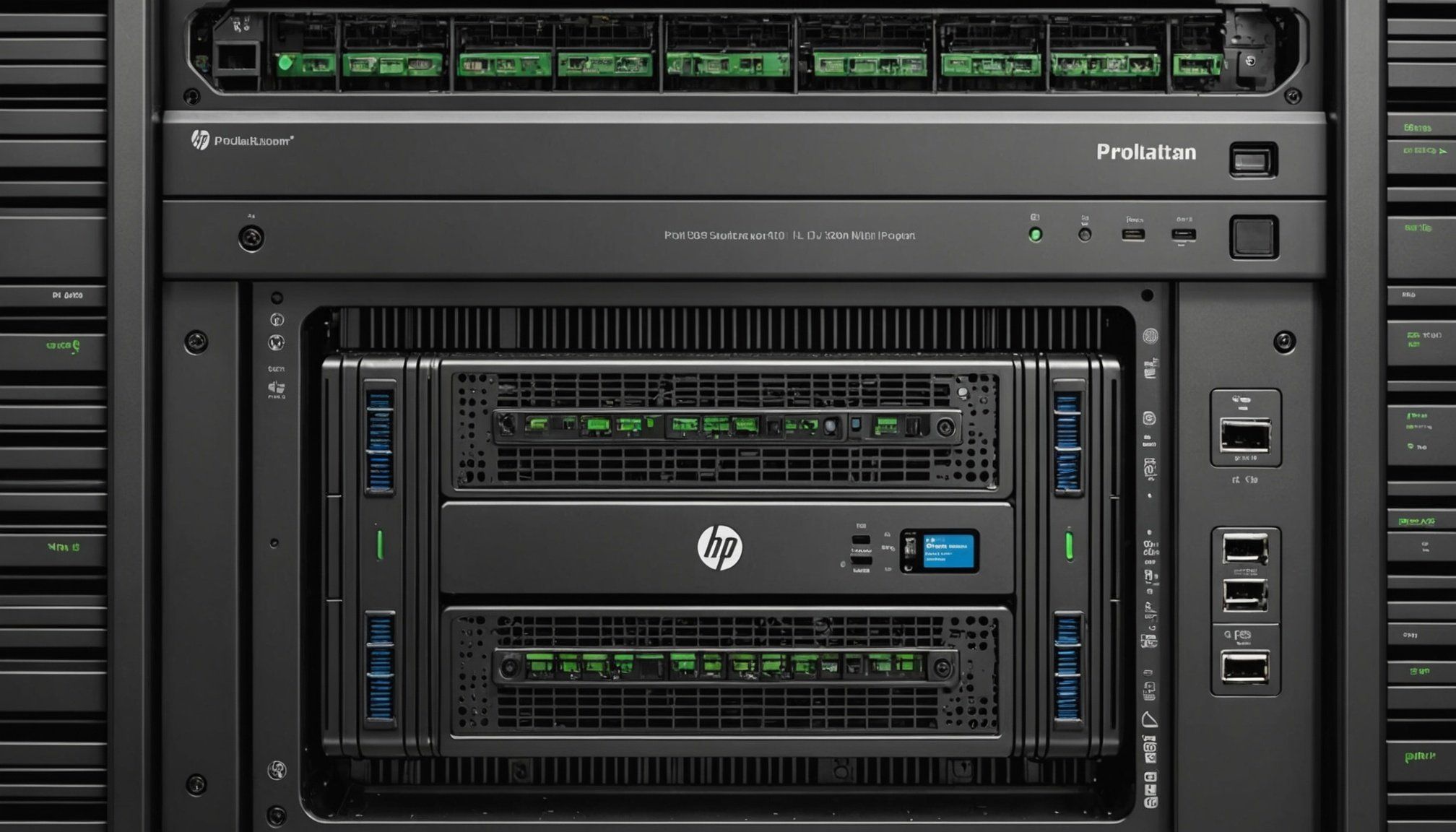Overview of Virtualization Technologies
Virtualization encompasses a broad range of technologies characterized by their diverse benefits in enhancing computing environments. Understanding Virtualization Basics involves recognizing different Types of Virtualization, which include hardware, software, and network virtualization.
Hardware virtualization allows multiple operating systems to run concurrently on a single physical server. This is typically achieved through hypervisors, which create and manage virtual machines (VMs), leading to improved resource utilization and flexibility. On the other hand, software virtualization simulates an entire computing environment to run applications independently of the underlying hardware. This enhances compatibility across various systems. Lastly, network virtualization abstracts physical network resources to create a more flexible network management structure, fostering efficient resource allocation and easier scalability.
In the same genre : Ultimate handbook for configuring a fast and secure vpn on your asus rt-ax86u router
The Virtualization Benefits in enterprise environments are numerous. By enabling higher resource utilization, enterprises can reduce costs by consolidating servers and minimizing energy consumption. Moreover, virtualization boosts flexibility, allowing enterprises to swiftly respond to changing workload demands and scaling requirements. It also plays a crucial role in achieving high availability and disaster recovery solutions, ensuring business continuity. As such, leveraging virtualization technologies is a strategic move toward modern, dynamic IT operations that can adapt and evolve with organizational needs.
Setting Up Virtualization on HP ProLiant DL380 Gen10
Implementing virtualization technology on the HP ProLiant DL380 Gen10 requires strategic preparation and configuration. Ensuring an effective setup begins with adequately preparing the server for virtualization.
Preparing the Server for Virtualization
Start by confirming the HP ProLiant DL380 Gen10’s compatibility with virtualization platforms. Essential prerequisites include ensuring sufficient hardware resources such as CPU, memory, and storage. This server’s versatile capabilities and robust specifications support diverse virtualization needs, allowing for efficient resource allocation.
Selecting the Virtualization Platform
Choosing a compatible virtualization platform is crucial. Consider popular options like VMware, Microsoft Hyper-V, or Citrix XenServer, which seamlessly integrate with HP ProLiant DL380 Gen10. Each platform offers unique benefits, so it’s vital to analyze requirements and opt for one that aligns with your IT infrastructure goals.
Installation Procedures
Once you’ve prepared the server and selected a platform, follow specific installation procedures to set up virtualization. This involves configuring the server BIOS settings to support virtual extensions and installing the virtualization software. Following platform-specific guidelines ensures optimal functionality and performance. Remember, detailed planning enhances the virtualization process, ensuring a transformation to a responsive and scalable IT environment.
HP ProLiant DL380 Gen10 Overview
The HP ProLiant DL380 Gen10 stands out with its robust server specifications, designed to meet high-demand virtualization workloads. At its core, it features powerful Intel Xeon Scalable processors, providing remarkable processing capabilities suited for diverse applications. Coupled with advanced memory support, it ensures swift data handling, facilitating efficient multi-tasking.
The server’s architecture optimizes it for virtualization, seamlessly handling multiple virtual machines without compromising performance. With up to 3 TB of memory, it significantly enhances VM agility, supporting larger and more complex workloads. The flexible storage options further bolster its capabilities, accommodating a mix of HDD and SSD drives for balanced performance and capacity.
Integration of advanced management tools simplifies server oversight, allowing IT administrators to efficiently monitor and manage resources. These tools streamline tasks like deployment and monitoring, enhancing overall server capabilities. Additionally, the embedded security features fortify the system against potential vulnerabilities, ensuring a resilient operational environment.
Ideal for virtualization, the HP ProLiant DL380 Gen10 combines powerful hardware with advanced management solutions, positioning it as an eminent choice for organizations aiming to leverage modern IT environments.
Setting Up Virtualization on HP ProLiant DL380 Gen10
Implementing virtualization technology on the HP ProLiant DL380 Gen10 requires strategic preparation and configuration. Ensuring an effective setup begins with adequately preparing the server for virtualization.
Preparing the Server for Virtualization
Start by confirming the HP ProLiant DL380 Gen10’s compatibility with virtualization platforms. Essential prerequisites include ensuring sufficient hardware resources such as CPU, memory, and storage. This server’s versatile capabilities and robust specifications support diverse virtualization needs, allowing for efficient resource allocation.
Selecting the Virtualization Platform
Choosing a compatible virtualization platform is crucial. Consider popular options like VMware, Microsoft Hyper-V, or Citrix XenServer, which seamlessly integrate with HP ProLiant DL380 Gen10. Each platform offers unique benefits, so it’s vital to analyze requirements and opt for one that aligns with your IT infrastructure goals.
Installation Procedures
Once you’ve prepared the server and selected a platform, follow specific installation procedures to set up virtualization. This involves configuring the server BIOS settings to support virtual extensions and installing the virtualization software. Following platform-specific guidelines ensures optimal functionality and performance. Remember, detailed planning enhances the virtualization process, ensuring a transformation to a responsive and scalable IT environment.
Configuring Virtualization for Optimal Performance
Ensuring optimal performance in virtual environments requires careful virtualization configuration. Proper allocation of resources—CPU, memory, and storage—is paramount. Balancing these resources prevents bottlenecks and enhances overall system performance. Performance tuning involves adjusting virtual machine (VM) settings to align with workload demands, ensuring that resources are neither underutilized nor overburdened.
Resource Allocation Strategies
Critical strategies include setting appropriate limits and reservations for CPU and memory resources. This avoids oversubscription and ensures that VMs receive the necessary resources when demand spikes. Employing resource pools enables efficient management, grouping VMs based on priority, which simplifies allocation and enhances system stability.
Network Configuration for Virtual Environments
Designing an efficient network is vital for multi-application scenarios. Implementing virtual LANs (VLANs) can segment traffic, reducing latency and improving security. Network Interface Card (NIC) teaming enhances redundancy and bandwidth, crucial for high availability needs. Consider leveraging software-defined networking (SDN) for greater control and flexibility in managing virtual networks.
Storage Configuration Tips
Optimizing storage for virtualization is crucial. Use fast storage solutions, such as SSDs, to reduce latency for I/O-intensive applications. Implementing thin provisioning and deduplication techniques can maximize storage utilization and lower costs. Regularly monitoring storage performance helps in identifying and resolving potential bottlenecks quickly.
Best Practices for Virtualization in Multi-Application Scenarios
Achieving effective virtualization in multi-application environments requires observing specific practices to optimize performance and resource allocation. The key challenge is balancing resources across various applications, ensuring smooth operation without conflicts.
Monitoring and Performance Management
Consistent performance management is essential in multi-application settings. Utilize comprehensive monitoring tools to track system performance and application behaviour. These tools provide insights into resource usage, enabling proactive adjustments. Monitoring helps identify underused resources or instances of resource contention, allowing for dynamic reallocation to enhance efficiency.
Scaling and Resource Strategies
Scaling virtualization as demand rises involves careful planning. Implement automatic scaling policies that adjust resources based on application demands. Consider utilizing cloud services for elastic scaling, which provides flexibility and cost-efficiency. Additionally, establish priority levels for applications to allocate critical resources effectively, minimizing the risk of performance degradation under high loads.
Ensuring Strong Communication and Collaboration
Ensure robust communication between IT teams to address multi-application challenges swiftly. Foster collaboration across departments to align virtualization goals with overall business objectives. Also, regular training sessions can prepare teams to respond effectively to evolving demands. Effective communication and planning allow organizations to leverage virtualization fully, maximizing benefits across diverse applications.
Troubleshooting Common Virtualization Issues
Virtualization can transform IT environments, but challenges can arise, requiring adept troubleshooting to maintain efficacy. Addressing virtualization troubleshooting involves recognizing typical obstacles and applying effective solutions to ensure seamless operation.
Diagnosing Performance Bottlenecks
When performance lags, it’s crucial to pinpoint the source of bottlenecks. Start by examining resource allocation; imbalances in CPU, memory, or storage can impede performance. Utilise robust monitoring tools to gather insights on system loads and VM performance. Adjust resource distribution to align with demand and enhance efficiency.
Resolving Configuration Errors
Configuration errors often manifest as misaligned settings, impacting virtualization. To mitigate this, ensure all settings, such as BIOS configurations and virtual network assignments, adhere to best practices. Cross-reference setup details with documentation specific to your virtualization platform to avoid common pitfalls. Consistent updates to software can prevent such discrepancies.
Managing Resource Contention
Resource contention arises when competing VMs vie for the same resources. To address this, set clear limits and reservations for resources, ensuring fair distribution and minimizing conflicts. Implementing resource pools can streamline this process by prioritizing critical applications, thus protecting them against underperformance during high-demand periods. Establishing these strategies cultivates a smooth virtualization environment where resources are optimally managed.











